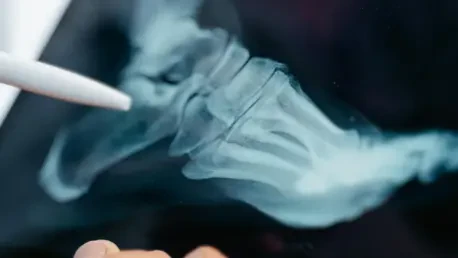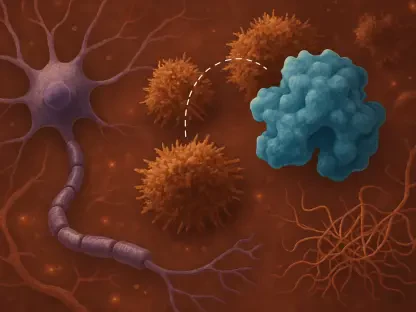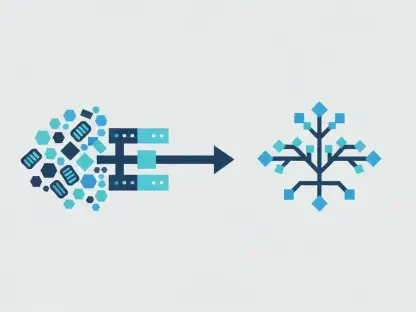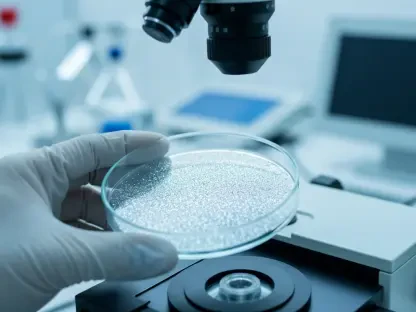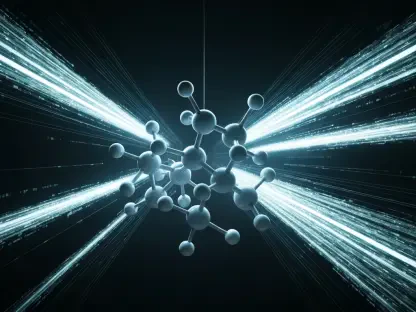Ivan Kairatov’s expertise in biopharma, particularly in advancing technologies and innovation within the industry, positions him as a leading figure in the field of biomedical imaging. With a wealth of experience in research and development, Ivan’s contributions have greatly impacted the realm of immunohistochemistry, especially in addressing the limitations of traditional methods in deep tissue imaging. Today’s discussion focuses on the groundbreaking 3D-IHC technique his team has developed, which enhances speed, depth, and sensitivity in imaging thick tissue samples.
Can you explain the challenges faced by traditional 3D immunohistochemistry methods in deep tissue imaging?
Traditional 3D immunohistochemistry methods struggle mainly due to the poor penetration of conventional antibodies, which drastically limits effectiveness in deep tissues. These antibodies are quite large in size, hindering their ability to diffuse uniformly into deeply embedded tissue structures. This gap poses substantial challenges, particularly in fields like neuroscience and pathology where precise mapping of large tissue volumes is critical for advancing our understanding.
What inspired you and your team to develop a new 3D-IHC technique?
We were motivated by the persistent need for faster, more accurate, and deeper tissue imaging methods. Many existing protocols were too time-consuming, unable to provide the desired depth of labeling, and failed to deliver sensitivity in detecting minute protein interactions within thick tissue samples. Our goal was to overcome these hurdles to facilitate better analysis of complex biological processes.
How does the POD-nAb/FT-GO 3D-IHC method work?
The POD-nAb/FT-GO method employs nanobodies fused with peroxidase and a signal amplification system called Fluorochromized Tyramide-Glucose Oxidase. Nanobodies are smaller and can penetrate dense tissues more effectively than conventional antibodies. Combined with the FT-GO system, this method enhances the density of fluorescent labeling, making it possible to visualize proteins within thick tissue sections far more quickly and with greater depth.
Why did you choose to use nanobodies over conventional antibodies for this method?
Nanobodies are remarkably smaller and exhibit more efficient diffusion in thick tissues, perfectly suited for high-resolution imaging applications. Their size, about one-tenth of traditional antibodies, allows us to address major penetration issues. Coupled with the enzymatic activity of peroxidase, they provide optimal conditions for enhanced signal generation and deep tissue imaging.
Can you elaborate on the role of peroxidase-fused nanobodies (POD-nAbs) in your technique?
POD-nAbs are crucial for catalyzing the deposition of fluorescent tyramides through the FT-GO system. This process significantly amplifies signals, ensuring sensitive detection of target molecules even in dense tissue sections. The fusion of nanobodies with peroxidase enables multifunctional applications, therefore broadening the scope for accurate immunolabeling across varied research contexts.
What is the Fluorochromized Tyramide-Glucose Oxidase (FT-GO) system, and how does it aid in signal amplification?
FT-GO is designed to enhance fluorescent signals during tissue imaging, facilitating higher-density labeling and improving visual detection capabilities. The incorporation of glucose oxidase works alongside peroxidase-fused nanobodies to amplify signals, ensuring comprehensive visibility of specific protein interactions across large tissue volumes in reduced time frames.
How did you ensure nearly uniform labeling across 1-mm mouse brain slices using this method?
We optimized tissue permeabilization using a urea-based solution named ScaleA2, which facilitates greater depth of penetration for labeling agents throughout the tissue. This adjustment allowed us to achieve almost uniform labeling, highlighting exogenously expressed proteins and endogenous targets uniformly across the tissue slice.
What are the benefits of using a urea-based solution like ScaleA2 in tissue permeabilization?
ScaleA2 aids in tissue transparency and enhances the penetration of labeling agents across dense tissues. This clarity ensures uniform distribution and intensity of labeling, critical for achieving detailed, accurate imaging outcomes. It’s particularly beneficial in addressing uneven labeling experienced with conventional methods.
How did the method perform in labeling endogenous targets compared to exogenously expressed proteins?
Our method showed remarkable efficacy in labeling both endogenous targets and exogenously expressed proteins. It provided robust signals across various markers like microglia, indicating its versatility. The uniformity of labeling ensures the clear representation of biological processes, critical for intricate tissue studies.
Why is NaN3 quenching important for multiplex immunolabeling, and how does it improve versatility?
NaN3 quenching is important because it enables sequential application of multiple labels without interference, allowing diverse targets to be visualized concurrently. This enhances the versatility of the POD-nAb/FT-GO system, making it adaptable for complex studies that require multiple antigen detections in the same tissue section.
What were the findings when applying your technique to Alzheimer’s disease model mice?
In Alzheimer’s disease model mice, our technique revealed activated microglia clustering around beta-amyloid plaques. This observation signifies neuroinflammation and disease progression, demonstrating the method’s utility in studying neurodegenerative diseases and strengthening our understanding of pathological changes.
In what ways does this new method provide advantages over standard fluorescent protein imaging?
It offers considerable signal amplification, up to nine times greater than standard fluorescent protein imaging. This increase in intensity significantly reduces imaging time and boosts throughput capabilities, making it particularly valuable for comprehensive analyses without compromising image quality.
What limitations does the POD-nAb/FT-GO 3D-IHC method currently have?
A primary limitation is the decrease in signal homogeneity in tissues thicker than 1 mm. Additionally, the non-linear nature of enzyme signal amplification presents challenges in quantitative antigen expression analysis. Expanding suitable nanobodies for histochemical use is also a matter of ongoing work.
How do you plan to address the issue of signal homogeneity in tissues thicker than 1 mm?
We are investigating novel approaches to enhance tissue permeability while maintaining signal stability in thicker samples. This will likely involve further tuning of the immunolabeling reagents and protocols to ensure consistent signal application across different tissue depths.
What are the challenges of comparing antigen expression quantitatively with this method?
The enzymatic nature of signal amplification can produce non-linear results, complicating quantitative comparisons. Addressing this requires method calibration and refinement of amplification processes, focusing on linearity and accuracy to facilitate reliable quantitative assessments.
Are there ongoing efforts to expand the availability of suitable nanobodies for histochemical labeling?
Absolutely. We are collaborating with various research groups to identify and characterize more nanobody sequences that can be effectively utilized for histochemical labeling. We are optimistic that as more sequences become accessible, their application in diverse studies will significantly broaden.
What potential broader impacts do you foresee for your technique in scientific research?
I envision significant advancements in understanding complex biological systems, particularly in neuroscience and cancer biology. The method offers deeper insights into tissue microenvironments, facilitating breakthroughs in diagnostics and therapeutic research, ultimately accelerating innovations across scientific domains.
How could this method influence clinical diagnostics and drug discovery?
By providing rapid, detailed tissue imaging capabilities, our method can improve diagnostics accuracy, allowing timely identification of pathological states. In drug discovery, it could help evaluate how drugs affect tissue architecture or cellular interactions, thereby informing effective therapeutic strategies.
Why is there a growing demand for rapid and high-resolution tissue imaging, particularly in brain research and cancer biology?
As we delve deeper into understanding diseases and biological processes, high-resolution imaging enables finer details to be observed, unraveling complex interactions within tissues. Rapid imaging provides timely feedback and facilitates high-throughput studies, making it indispensable in progressive research fields.
What are your future plans for improving or expanding the capabilities of the POD-nAb/FT-GO 3D-IHC method?
We’re committed to refining our technique, particularly in enhancing its applicability across thicker tissues and expanding the range of target molecules it can identify effectively. We aim to ensure robust quantitative capabilities while broadening our method’s use in diverse scientific inquiries and clinical applications.
